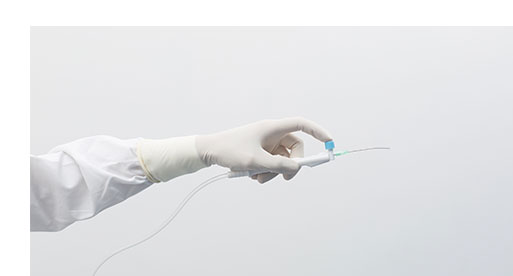Surgical drapes: role, function and importance in dental practice
Good practices for surgical patient draping
For preventing infections during surgery, one of the main risks is the micro-organisms normally present on the patient’s skin. During the operation, these can easily get into the surgical wound, causing infections and complications. That is why the patient’s skin is decontaminated with a skin antiseptic and the patient is covered with surgical drapes.
Surgical draping is a fundamental practice and consists of the use of sterile drapes to cover and protect the surgical field during surgery. This technique is essential to ensure a sterile environment and reduce the risk of infection.
To understand the importance of the use of surgical drapes, it suffices to consider that the World Health Organization (WHO, 2018) states that the use of sterile drapes is correlated with the reduction of surgical area infections in various surgical disciplines, including dental surgery.
Importance of surgical draping
Surgical draping is considered the fundamental pillar of asepsis during surgery and contributes significantly to preventing post-operative complications. There are numerous advantages to this procedure:
- Maintaining sterility: The drapes provide a physical barrier that protects the surgical field from contamination, thus maintaining sterility. This is particularly important in dental implant surgery, where aseptic techniques are crucial to manage and minimise the risk of infection. It is estimated that infection of the surgical area occurs in around 15% of surgical procedures (Bruce 2001).
- Prevention of cross-infection: Drapes help prevent cross-infection between patients and from patient to doctor and vice versa. This is particularly important given the significant number of microorganisms that can cause infections in a dental environment.
- Facilitation of intervention: A well draped surgical field allows the surgeon to work in a controlled environment, increasing the efficiency and safety of the operation.
- Patient protection and comfort: In addition to protecting the surgical area, drapes help maintain patient privacy and comfort during surgery, creating a more professional and reassuring environment.
- Cost Reduction: treating infections requires additional treatments and adds significant costs. This is why using drapes can help with cost saving by reducing the risk of infection (Manz and Edgar, 1998).
Types of surgical drapes
First of all, it should be considered that surgical drapes should be made of NWF because they result in a lower infection rate in surgical procedures compared to traditional cotton drapes (Treggiari et al, 1992). Cotton drapes release particulate matter into the air that can contaminate the surgical area. This particulate matter carries bacteria that are present in the environment, transporting them from surfaces to the surgical area and thus increasing the risk of infections.
There are mainly 2 different types of drapes used in dental surgery (Castro et al, 2004):
- Standard drapes: these drapes are square or rectangular and are composed of two layers of different materials, an absorbent layer and a waterproof layer. They are available with or without adhesive, sterile or non-sterile.
- U-shaped drapes: these drapes are designed to fit the patient’s head and provide the best sterile field environment for dental procedures. They also consist of two layers of different materials, an absorbent layer and an impermeable layer.
Discover Euronda Alle surgical drapes: available in various materials, sizes, and models, they support the creation of a contaminant‑free environment while protecting the surgical site and operators.
How to perform effective surgical draping
- Organising the work area: set up the surgical area with all instruments and materials at hand to minimise movement and potential contamination during the draping process.
- Minimising handling: handling the drapes as little as possible to avoid contamination. When positioning the drapes ensure that there is no contact with non-sterile surfaces.
- Work sequentially: start by placing the drapes in the area closest to the surgical area and proceed outwards. This helps to maintain a sterile field and reduces the risk of contamination.
What are the most common mistakes when applying surgical drapes?
- Inadequate hand hygiene: failure to perform proper hand hygiene before handling sterile drapes can lead to them becoming contaminated. Always wash your hands thoroughly and use gloves when necessary.
- Inadequate patient preparation: failure to adequately disinfect the patient’s skin may increase the risk of infection. Before using sterile drapes, it is therefore necessary to be sure to thoroughly decontaminate the patient’s skin.
- Touching non-sterile areas: during draping surgical staff must avoid reaching into non-sterile areas or touching non-sterile surfaces to maintain the integrity of the sterile field.
Efficiency and safety in dental surgery: the importance of surgical draping
Surgical draping plays a major role in dental surgery. Safeguarding the sterility of the surgical field prevents the risk of infection and allows surgery to take place under optimal conditions. The correct use of surgical drapes not only promotes successful surgery, but also reduces post-operative complications, protecting patient safety and the efficiency of the medical team.
Bibliography
Bruce, J., Russell, E. M., Mollison, J., & Krukowski, Z. H. (2001). The measurement and monitoring of surgical adverse events. Health technology assessment (Winchester, England), 5(22), 1–194. https://doi.org/10.3310/hta5220
Castro Ferrer MJ, Masea Alvarez AM, Rodríguez García JI. (2004) Comparison of sterile, disposable surgical drapes. Enferm Clín.;14:3-3.
Chawla, A., Sujlana, A., & Dhawan, D. (2017). Ergonomically Designed Patient Drape. Journal of clinical and diagnostic research : JCDR, 11(4), ZL01–ZL02. https://doi.org/10.7860/JCDR/2017/25287.9704
Manz, E. A., & Edgar, B. L. (1998). Examining draping practices for cost-effectiveness. SSM, 4(8), 41.
Treggiari, M., Benevento, A., Caronno, R., & Dionigi, R. (1992). Valutazione dell’efficacia di teli e camici in tessuto non tessuto verso teli e camici in cotone nel ridurre l’incidenza delle infezioni postoperatorie della ferita. Minerva chirurgica, 47(1-2), 49–54.
World Health Organization; Global Guidelines for the Prevention of Surgical Site Infection. (2018). Web Appendix 17, Summary of a systematic review on drapes and gowns. Available from: https://www.ncbi.nlm.nih.gov/books/NBK536409/




